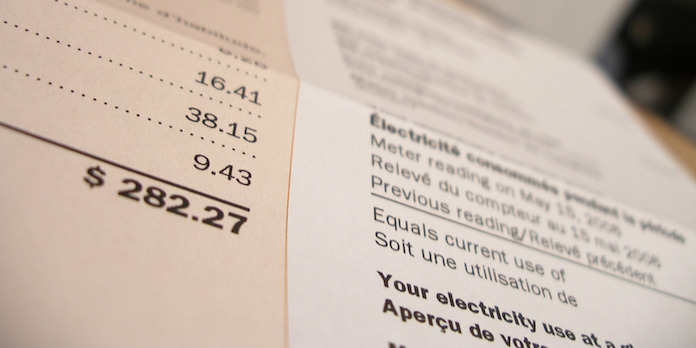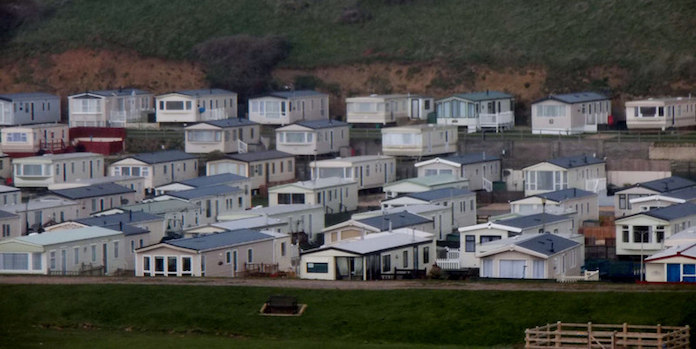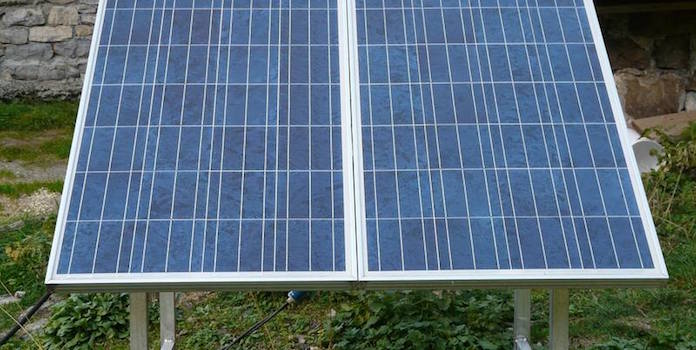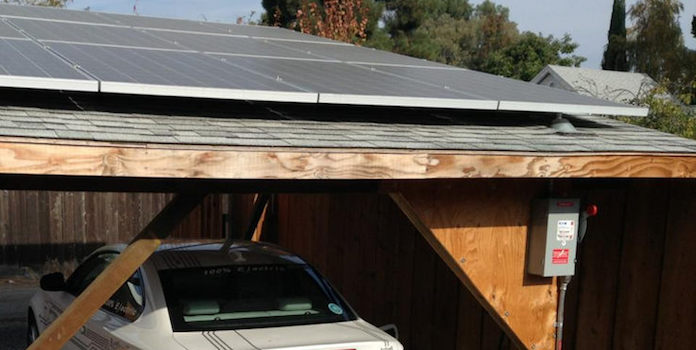Yes, Solar Panels for Mobile Homes Are Possible
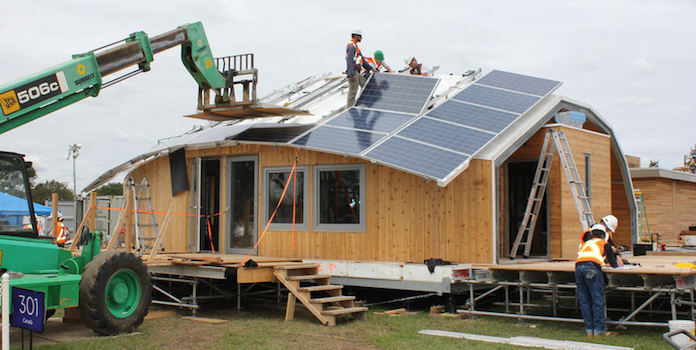
A comprehensive answer to ‘Are Solar Panels for Mobile Homes Possible?’
Interested in installing solar on the roof of your manufactured home? Let’s be honest: in most instances, it’s not possible to install solar panels for mobile homes. It’s mostly due to the roof structure of mobile homes – they simply aren’t designed to hold the weight of an entire solar installation.
However, that doesn’t mean you’re completely out of luck. Some mobile homes can safely have solar installed; it all depends on your local building codes as well as the structure of your home. And if it ends up that you really can’t have solar on your roof, maybe you’ve got another area of your property where you can install solar panels.
Before looking into all this, let’s figure out if installing solar panels for your mobile home is even a good decision.
#1 Will solar panels lower my electricity bill?
In a word: yes. In most states, it’s cheaper to purchase and install solar panels on your roof than continuing to purchase electricity from your utility for the next 25 years (which is the estimated life of solar installations).
Solar panels for mobile homes cost as much as any other roof-top installation, as there is no real special equipment, and you can see some real savings.
Let’s run through a quick example just to see typical costs and savings:
Say you live in a manufactured home in Nevada. You use about 913 kWh each month and spend $0.13/kWh for electricity from the utility (both of which are average for the state).
To cover 100% of your annual energy usage, you’d need a 6.5kW installation (equal to about 25 solar panels).
Let’s make it a little more interesting: You measure your roof, but uh oh! It looks like you can only fit 12 solar panels on your roof. This means you can only cover 50% of your total electricity use with solar! Does installing solar panels to cover 50% of your usage make sense? Let’s find out!
12 solar panels (3.12kW) would produce about 5,299 kWh each year in Nevada. At the national average installation cost of $2.93/watt, a 3.2kW installation would cost $6,400 after the 30% federal tax credit. Assuming they last the standard 25 years, your solar installation would produce about 120,504 kWh by the end of its life.
If you purchased that much electricity from your utility over the next 25 years, you’d spend $24,062. So, by covering even just 50% of your total electricity use, you save over $17.5k! That seems like a good deal to us!
#2 Can I install solar panels on my mobile home?
In all honesty, probably not. As we saw above, the issue is not about electricity use or production. You can save quite a bit of money by offsetting your electricity costs for your manufactured home by going solar.
It’s also not about roof space. Sure, you might have a smaller roof than the average house, but with the average manufactured home being over 1,000 square feet, you should have no problem fitting a row or two of solar panels up there. You can even save money by covering just 50% of your total usage!
The issue is the structural components of most manufactured homes, specifically the roof and the foundation. Most of these homes simply aren’t designed to hold solar panels. Let’s get a little more detailed:
The roof needs to be strong enough
Solar panels and all their equipment are heavy. The solar panels themselves weigh around 35 pounds each. Then there’s the aluminum rails that the solar panels sit on, the flashing and attachment points that are bolted to your roof, and the electrical conduit that protects the wires running to your breaker box, not to mention the weight of the installers while they wander around your roof installing the panels!
Even if we only account for the solar panels, the 12-panel system above would add an additional 420 pounds to your roof! Now add 3 installers at 170 pounds each, 2 feet of snow in the winter, and insane wind pushing down (or pulling up, which is also an issue!) on the entire roof during a snowstorm and you can see why any homeowner contemplating solar needs a strong roof structure to ensure their own safety and the safety of the installers.
A lot goes into making sure a roof is safe for solar. Solar companies must follow local building codes, ensuring that any home’s roof joists are strong enough to handle all the weight. They look at the dimensions of the roof joists, the spacing between joists, and even the type of wood used for the joists (since some types of wood are weaker than others). They also look for damage to joists, rotten wood, mold, or any other signs that your joists are compromised.
The issue with most manufactured homes is that they typically have smaller roof joists than conventional homes. This means they can’t safely hold the weight of the installation. If you’ve got the right joist set-up, you could be well on your way to safely installing solar on your roof, but few mobile homes actually do.
A permanent foundation is required
We’ve all probably seen a conventional house being built. Builders dig deep into the ground to lay a concrete foundation that gives the house its strong structure. Manufactured homes are different, though. They aren’t necessarily permanently embedded into the ground. Instead, they are placed on top of the ground.
In everyday life, this isn’t really an issue. With solar panels, though, building codes note that the structure they’re installed on needs to be permanently attached to the ground. This might not seem like a huge issue, but depending on your local building department, it could stop your installation in its tracks.
City or county building codes are based on the International Building Code, but by no means do they follow every rule exactly. Before you wave solar off as impossible, be sure to talk to a few installers to see what your local building department truly requires.
Remember, solar companies want to install solar on your roof! If they say they can’t install on your roof, it’s for your own safety!
#3 Are there other places to install solar on my property?
Can’t install on your roof, but still interested in solar? You might have other options!
Ask yourself if there are there any other buildings you can install solar on. Maybe an enclosed patio, garage, or outbuilding? The requirements to put solar on these buildings is the same as for homes – they need to be permitted, structurally sound, and large enough for solar panels – but these buildings certainly open up your available roof space!
You could also consider a ground mounted solar installation. Instead of solar panels on your roof, a structure is permanently attached to the ground and the solar panels are installed on it. If you’ve got the space and your city or county allows it, this could certainly be an option.
Ground mounts are more expensive than rooftop solar, so keep that in mind. Again, reach out to a few installers to see what they offer and what your local regulations are.
#4 Consider energy efficiency upgrades
If you can’t install solar (and even if you can), consider installing a few energy efficiency upgrades to your home. In fact, the most cost-effective thing you can do to lower your energy costs is to install energy efficient upgrades. It’s even cheaper than solar!
Older mobile homes are infamously inefficient. Windows are thin and unsealed, allowing conditioned air to leak out. Walls can be uninsulated. The Environmental and Energy Study Institute found that people living in manufactured homes built before the late 1970s use 1.5x more energy than any other home type.
In 1976, new federal standards for manufactured homes (known as the HUD Code) means they are now much more energy efficient, but new mobile homes can still be plagued by inefficiencies. A study by the US Department of Energy identified the 5 best upgrades to increase your mobile home’s efficiency:
- Seal air leaks as well as furnace ducts
- Perform a furnace tune-up to ensure it’s working properly
- Adding insulation to the belly of the home
- Installing storm windows inside the home
- Blowing insulation into the attic space
Also consider replacing old lightbulbs with LEDs, replacing that 30-year old refrigerator and dishwasher for Energy Star models and caulking around all your windows and doors so conditioned air can’t escape. Most of these little projects can be done in a weekend and they’ll go a long way to reducing your energy use (and costs)!
More: 5 Major Ways to Save Money on Home Energy Beyond Solar Panels
#5 The Future looks bright for solar on mobile homes
Heavy mounting equipment isn’t the only option to install solar on your roof. New products are constantly being introduced and we’re seeing more and more options that could easily lend themselves to mobile homes in the future.
Here are the 2 most promising options:
Tesla solar roof tiles
If you haven’t heard of these yet, Tesla’s solar roof tiles might just be a game changer for the entire solar industry when they come out in 2017. These solar tiles are made of textured and colored glass with a solar cell embedded. They look just like any other roof shingle and they actually replace your shingles on your roof – the solar panels don’t go on your roof, they are your roof! This cuts cost and weight, which is great news for manufactured homes!
Details on the product are still scarce, but hopefully they’ll be a great solar option for mobile homes in the future.
Stick-on solar
Like solar tiles, stick-on solar panels also weigh less than traditional solar installations. These solar panels have an adhesive backing that simply sticks on to your shingles. Installation is ultra-fast compared to traditional hardware.
The best part? They are ultra-lightweight as well! The panels don’t have the aluminum frames that most solar panels have and there’s no attachment hardware like rails, L-feet, or anything else. Lumeta, one of the more prominent manufacturers of stick-on solar for homes, is planning to release their products in late 2017. These panels weigh just 17.5 pounds, compared to 35 to 40 pounds for most traditional solar panels.
Once available, both these stick-on panels and Tesla’s solar shingles could open up solar to manufactured home owners that otherwise couldn’t get solar on their roofs. It’s certainly an exciting time for solar!
The bottom line on solar panels for mobile homes
You can certainly install solar on mobile homes, but homes that meet the requirements are fairly rare. Our best advice is to talk to a few local installers to see what the local building requirements are and have them inspect your roof joists and foundation to see if your home is up for the challenge.
If you can’t install solar on your roof, consider other places to install solar on your property: garages, patios, or even open areas with space for a ground-mounted installation.
And don’t forget the efficiency measures! Whether you install solar or not, upgrading your home’s insulation and sealing air leaks goes a long way to ensuring you are using as little energy as possible!
Image Credit under CC License via Flickr – 1, 2, 3, 5, 6 & Pixabay – 4

